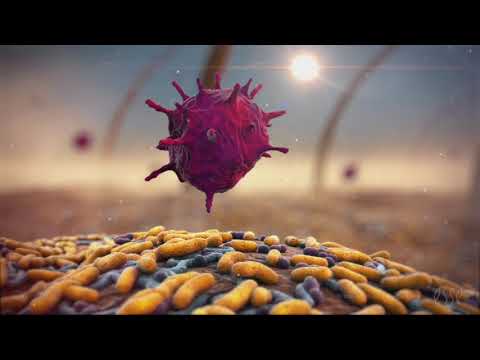
Resident Flora
March 28, 2021In addition, LPS affected reminiscence in mice, suggesting the event of mind dysfunction . These adverse actions of peripheral LPS on amyloidogenesis, reminiscence operate and neuronal death had been inhibited by sulindac, an anti-inflammatory agent, supporting the function of peripheral inflammation in AD pathology. Interestingly, it was shown that inflammatory cytokines similar to IL-1β and TNF-α can improve the expression of APP and the formation of Aβ . Neurodegenerative pathologies are generally characterized by the misfolding, oligomerization and accumulation of toxic species similar to Aβ in AD, α-Syn in PD, and the prion protein in CJD. In addition, it seems that a major supply of professional-inflammatory diffusible indicators associated with brain neuroinflammation originates from peripheral organs and systems such because the gastrointestinal tract microbiome. At the cellular and molecular levels, LPS is able to induce the release of inflammatory mediators and ultimately induce synaptic loss, which may lead to cognitive impairment through microglial activation, generation of reactive oxygen species and oxidative stres.

They found that obese mice genomes consisted of an abundance of genes encoding for enzymes capable of breaking down polysaccharides which might be indigestible by the human body alone. Pacemaker neurons exert management over neuronal circuit perform by their intrinsic capability to generate rhythmic bursts of motion potential. Recent work has recognized rhythmic gut contractions in human, mice, and hydra to be dependent on both neurons and the resident microbiota. However, little is thought about the evolutionary origin of these neurons and their interaction with microbes. In this examine, we recognized and functionally characterized prototypical ANO/SCN/TRPM ion channel-expressing pacemaker cells within the basal metazoan Hydra through the use of a mixture of single-cell transcriptomics, immunochemistry, and useful experiments. Unexpectedly, these prototypical pacemaker neurons categorical a rich set of immune-related genes mediating their interplay with the microbial setting.
Resourcethe Cancer Microbiome Atlas: A Pan
There is now persuasive evidence linking the gut microbiota with vitality homeostasis of rodent biomedical fashions and people, together with microbial-mediated promotion of nutrient acquisition and storage . The significance of RNA in sustaining mobile physiology by controlling gene expression in response to intrinsic and external cues has lengthy been underestimated. Now, quite a few human diseases have been linked to RNA functioning. Likewise, we now know that bacterial pathogens harness a big suite of noncoding RNA molecules to adapt to environmental stress and to precisely regulate their virulence applications. In an era of antibiotic disaster, it is important to find various fight methods against pathogenic micro organism — ideally ones that spare the helpful microbiota communities. The high specificity of RNA molecules provides nice potential for attaining these targets.
However, these pathologies remain debilitating and fatal circumstances, with significant negative medical, economic and social impacts. To date, there are no effective therapeutic approaches to stop, delay or reverse these issues, which start with cognitive loss and alterations of neurovegetative functions and progress in the direction of language deficit, reminiscence loss, motor difficulties and in the end death . These neurodegenerative ailments are associated with neuronal loss in a number of regions of the brain, such as the frontal cortex, hippocampus and basal ganglia. AD and PD may be categorised as both “early-onset, genetic” (also called “familial”) or “late-onset, sporadic” . Most significantly, the late-onset forms are extra prevalent and are considered to be the main cause of dementia and motor disease in the aged population . Currently, almost 50 million individuals worldwide undergo from neurodegenerative illnesses , mainly dementia, and this quantity is anticipated to succeed in 152 million by 2050 .
S1 Mannequin Modelling Of Plasmid Switch And Transconjugant Growth.
Community-stage interactions also can alter the power of selection for resistant variants within the inhabitants . In support of a key role for interspecific interactions in resistance evolution, observations of bacteria isolated from pure and scientific settings point out genes concerned in antibiotic-resistance evolution are sometimes horizontally transferable [14–17]. Despite this, direct observations of how these several types of effects balance out are lacking. Consequently, it remains unclear how interactions with species-rich microbial communities have an effect on progress and antibiotic-resistance evolution of particular person species or strains of bacteria. A second key implication is that resident microbiota modified selection on antibiotic resistance in our focal strain.
coli pressure only developed antibiotic resistance in the absence of the resident microbial group, even though we discovered resistance genes, including a extremely efficient resistance plasmid, in resident microbial communities. We recognized bodily constraints on plasmid switch that may explain why our focal strain failed to acquire a few of these helpful resistance genes, and we found some chromosomal resistance mutations had been only helpful in the absence of the resident microbiota. This suggests, relying on in situ gene transfer dynamics, interactions with resident microbiota can inhibit antibiotic-resistance evolution of individual species. Some outcomes may change with various kinds of resident microbiota or various kinds of plasmids . Nevertheless, we observed a qualitatively constant suppression of the focal strain throughout the three human donors, which was all the time stronger within the presence of ampicillin and, in some cases, was associated with colonisation resistance .